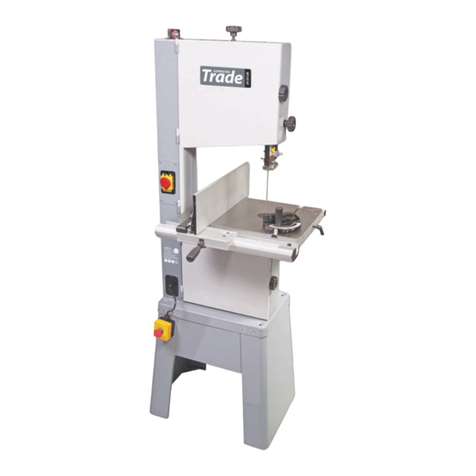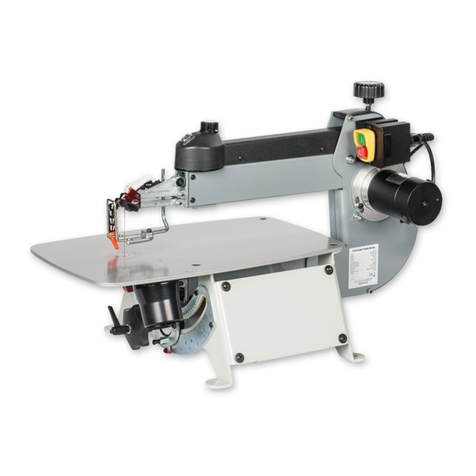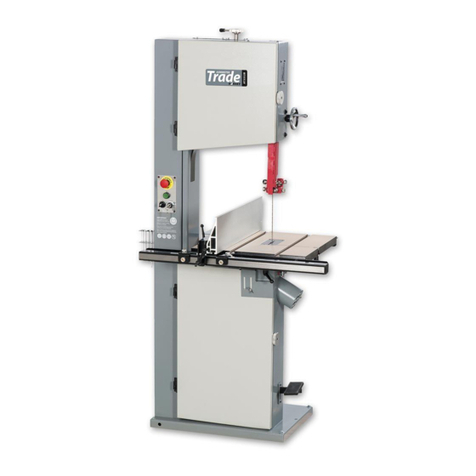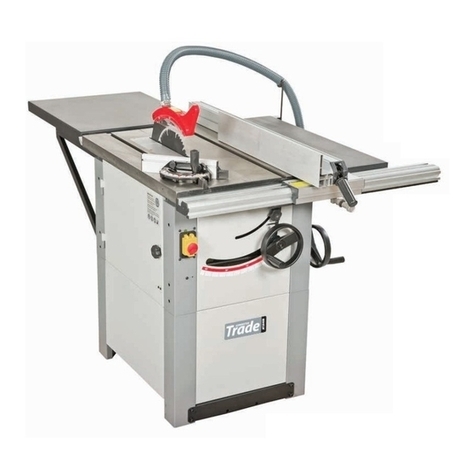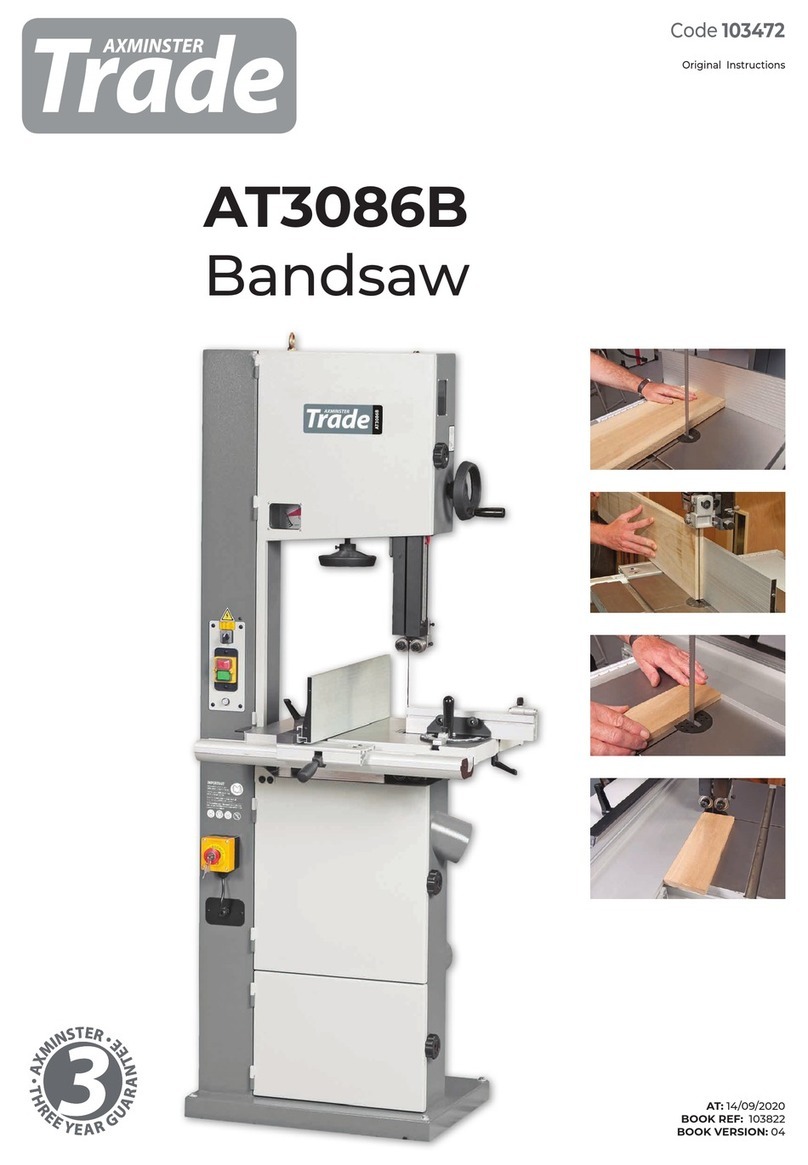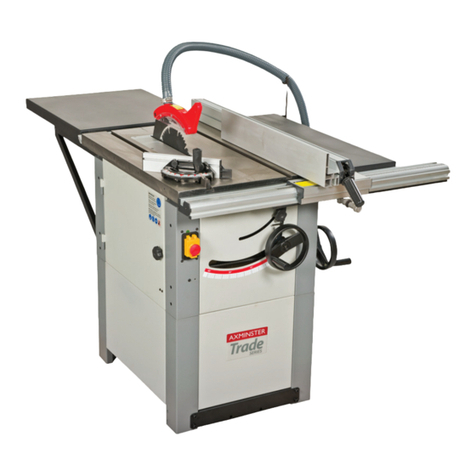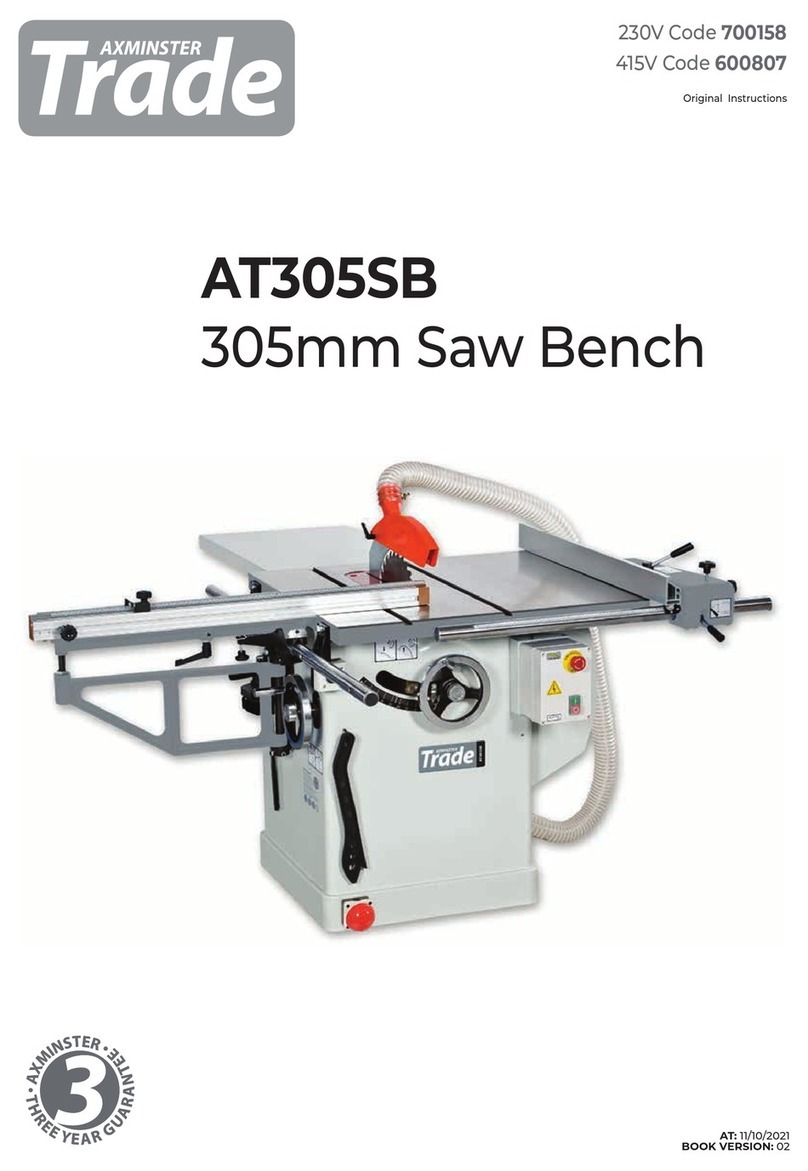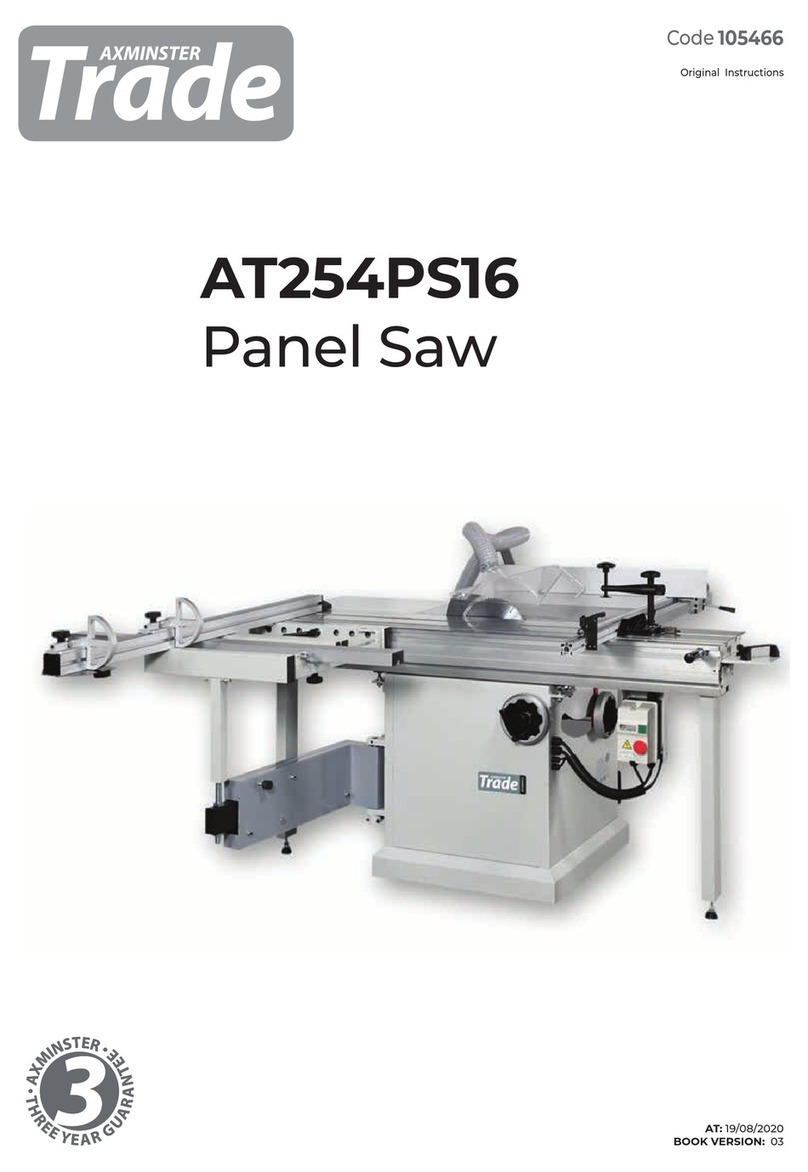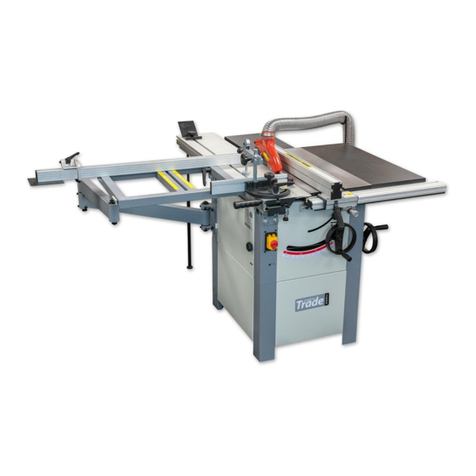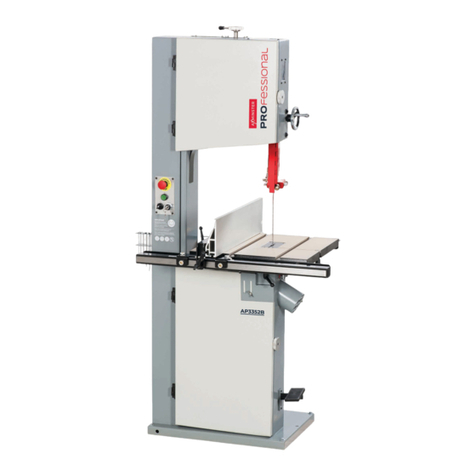
- 6 - Please Save This Manual For Future Reference
12. PROVIDE ADEQUATE SUPPORT. To the rear and sides of the table saw for wide or long workpieces.
13. AVOID KICKBACKS. Avoid kickbacks (work thrown back towards you) by keeping the blade sharp, by keeping
the rip fence parallel to the saw blade, by keeping the splitter and anti-kickback fingers and guard in place and
operating, by not releasing work before it is pushed all the way past the saw blade, and by not ripping work that is
twisted or warped or does not have a straight edge to guide along the fence.
14. AVOID AWKWARD OPERATIONS. Avoid awkward operations and hand positions where a sudden slip could
cause your hand to move into the spinning blade.
PROTECTING YOURSELF FROM KICKBACK. Even if you know how to prevent kickback, it may still happen. Here
are some ways to protect yourself if kickback DOES occur
:• Stand to the side of the blade during every cut. If kickback does occur, the thrown workpiece usually travels directly
in front of the blade.
• Wear safety glasses or a face shield. In the event of kickback, your eyes and face are the most vulnerable parts of
your body.
• Never, for any reason, place your hand behind the blade. Should kickback occur, your hand will be pulled into the
blade, which could cause amputation
.• Use a push stick to keep your hands farther away from the moving blade. If kickback occurs, the push stick will
most likely take the damage your hand would have received
.• Use feather boards or anti-kickback devices to assist with feeding and prevent or slow down kickback.
CAUTION: Statistics show that most common accidents among table saw users can be linked to
kickback. Kickback is typically defined as the high-speed expulsion of stock from the table saw toward its
operator. In addition to the danger of the operator or others in the area being struck by the flying stock, it is
often the case that the operator’s hands are pulled into the blade during kickback.
The protection of people against electrical shock due to indirect contacts should be normally ensured by
automatic isolation of the electrical power supply of the machine by the operation of a protective device
installed by the user in the line powering the machine;
WARNING!
Safety is the most important consideration in the operation this equipment. The following instructive.
IN GENERAL
The machine is designed to cut solid wood, chipboard, fireboard, plywood and also these materials where they are
covered with plastic laminate. The machine is not designed to cut meat, metal material, log wood.
This machine is provided with various safety equipment protecting the operator and the machine as well. This,
however, cannot involve all safety aspects. Therefore the operator must read through and understand this chapter .
He must moreover respect also other aspects of danger, referring to surroundings conditions and processed
materials.
This manual takes in 3 categories of instructive safety symbols:
Appeal recommending to proceed entirely according to following instructions. A
dispatch or operator's heavy injury impends in case of non-performing this regulation.
Warning against improper techniques or machine using ways, those can endanger
human health, machine functioning, environment or cause economic worse.
Caution is an appeal to appropriate care during practicing of following activities.


